Let’s explore how does a Cannon work and their incredible evolution with easy-to-understand visuals.
Have you ever seen an old cannon while visiting a fort or museum? These historic weapons once played a major role in battles and shaped the rise and fall of kingdoms. Today’s modern missiles and guns evolved from cannons — but how exactly did cannons come to be, and how do they function?
Let’s dive into that story with a clear explanation and a touch of 3D magic.

Watch the Full 3D Animation
Want to see all of this in amazing 3D visuals? Watch our video on YouTube Channel for a fully animated explanation of how cannons work — from history to science.
Before the Cannon: The Evolution of Early Weapons
Before cannons existed, the main weapon used in war was the spear or lance. Early spears were made from hard stones and wood, later upgraded with iron tips. However, these weapons were only effective in close combat.
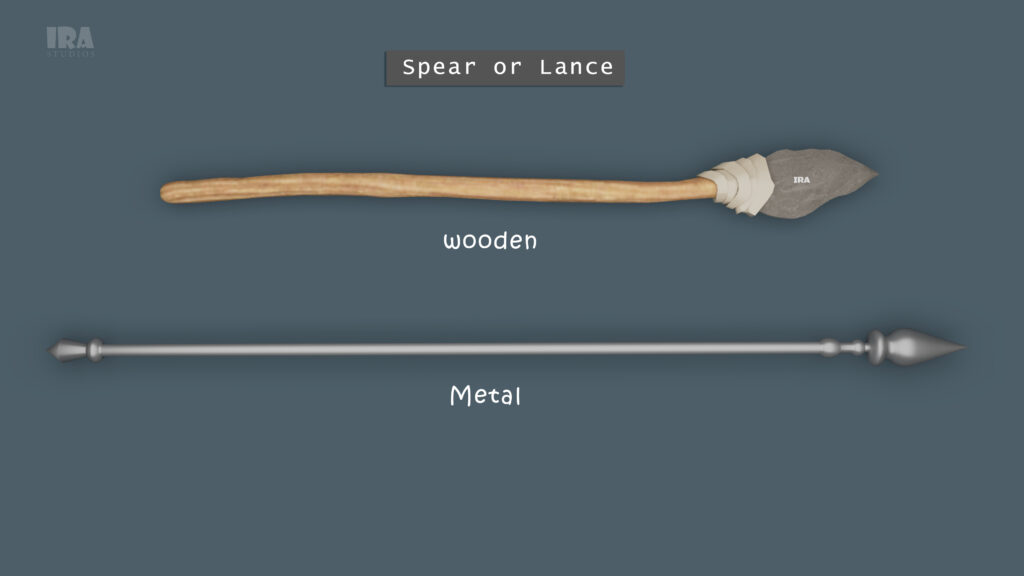
To overcome this limitation, a new weapon was invented between the 10th and 12th centuries in China — the fire lance.
The Fire Lance – The First Step Towards Guns
The fire lance is considered the ancestor of all modern firearms. It was basically a spear with a small tube attached. That tube was filled with gunpowder, and a simple setup was used to ignite it. When enemies came close, the gunpowder ignited, releasing flames and sometimes small metal pieces or stones. While it couldn’t shoot far, it was deadly at short range.

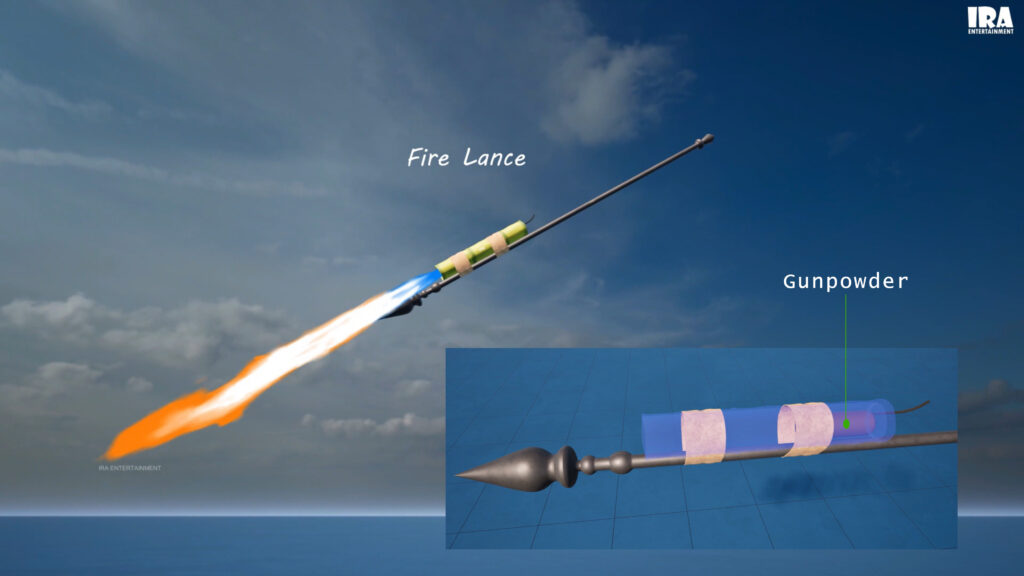
Hand Cannons
Later, in the 13th century, metal barrels were added, and Hand cannons were born — considered the world’s first true guns.
Hand cannons operated using the same working principle as cannons. Since their firing range and power were limited, cannons were later invented.

Main Parts of a Cannon (Explained Simply)
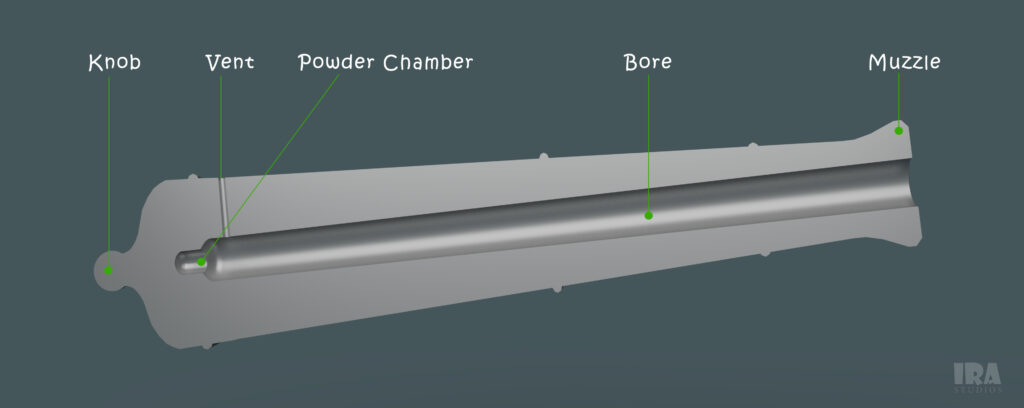
Muzzle – The front opening. The explosion pushes the cannonball out from here with high speed and direction.
Bore – The inner tube of the cannon barrel. It channels pressure from the explosion.
Vent – A small hole through which the fuse is lit to ignite the gunpowder.
Powder Chamber – Where the gunpowder is placed.
Knob – Helps in handling and sometimes absorbing recoil.
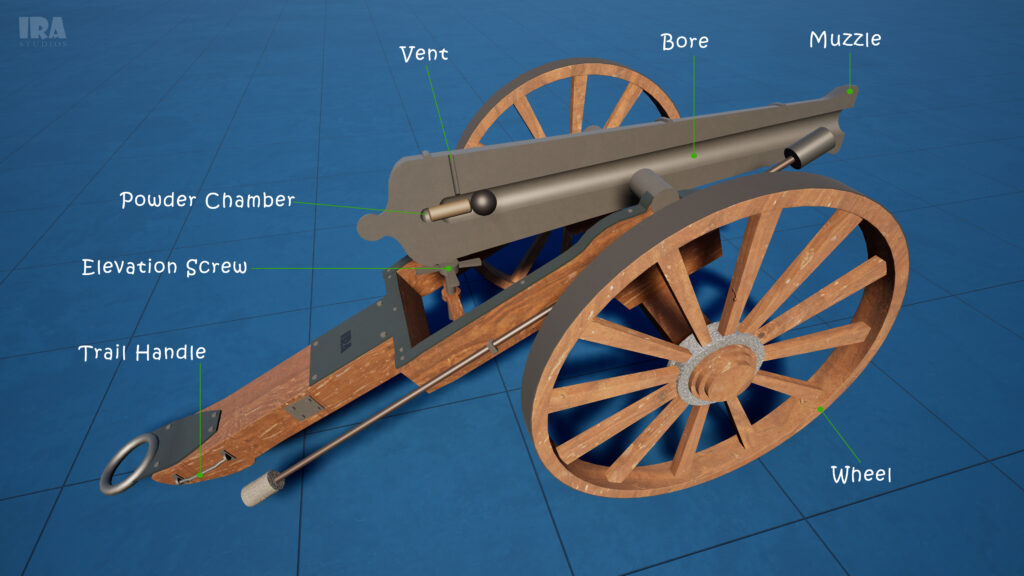
Trail Handle – Used to position and aim the cannon.
Elevation Screw – Allows manual adjustment of the cannon’s angle.
Carriage and Wheels – Help move the cannon, often pulled by horses.
Most cannons were made from bronze or iron to handle high pressure from the explosions.
How Many People Are Needed to Fire a Cannon?
Operating a cannon isn’t a one-man job. It usually takes at least five people to prepare, load, and fire it safely. And moving large cannons required up to four horses.
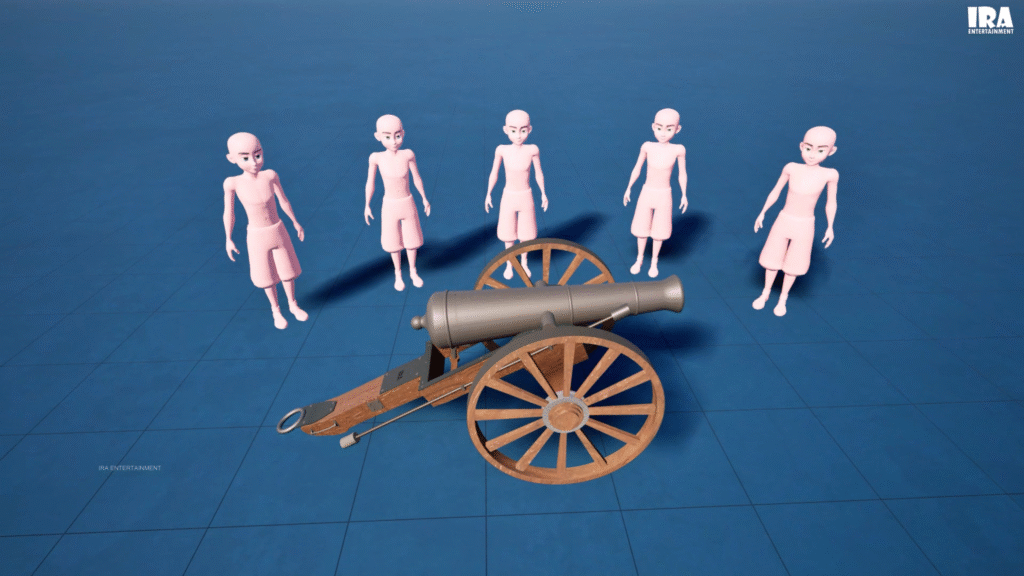
How Does a Cannon Actually Work? (Step-by-Step)
Let’s go through the full firing process of a traditional cannon:
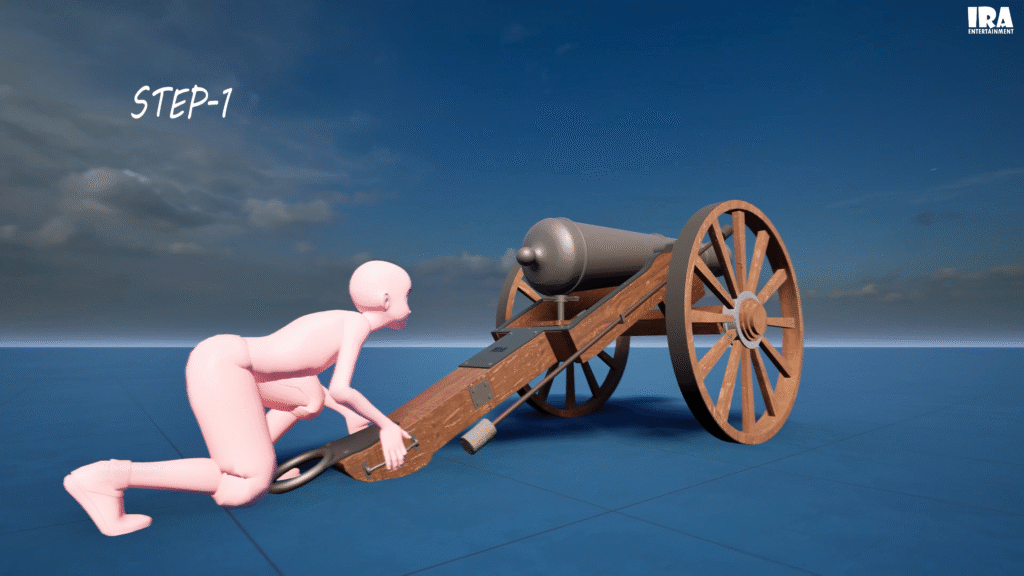
Step 1 – Set the Target
Pick your target, check the wind direction, and adjust the cannon’s aim.
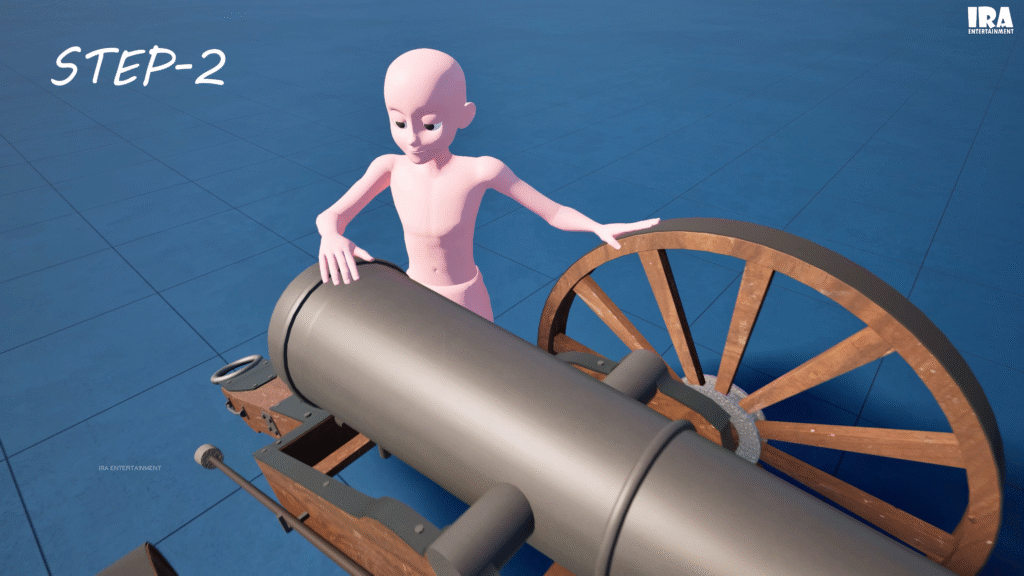
Step 2 – Seal the Vent
One person closes the vent hole using a vent stopper or finger to prevent sparks during loading.

Step 3 – Clean the Barrel
Use a rod to clean the inside and remove any leftover debris or residue.
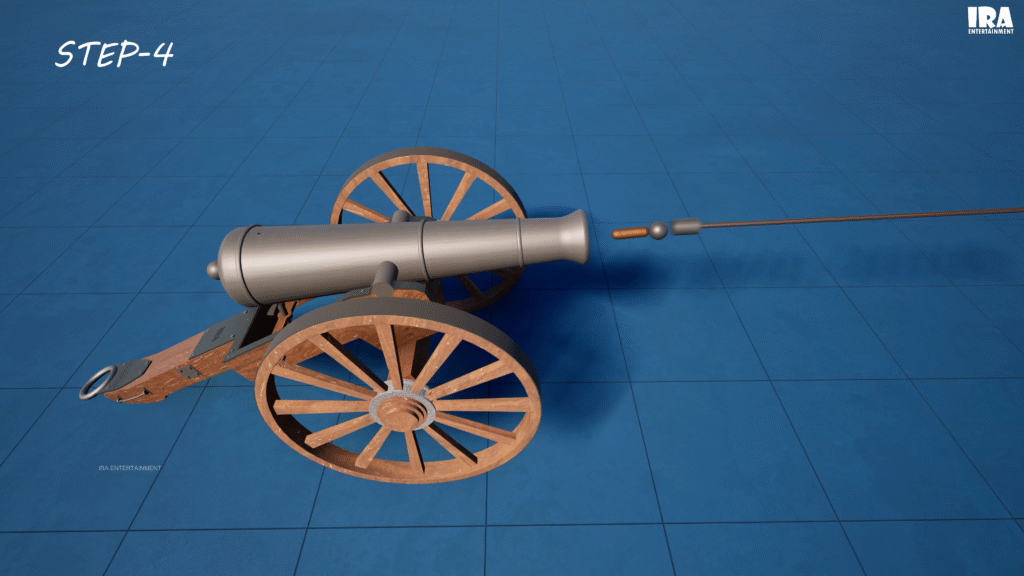
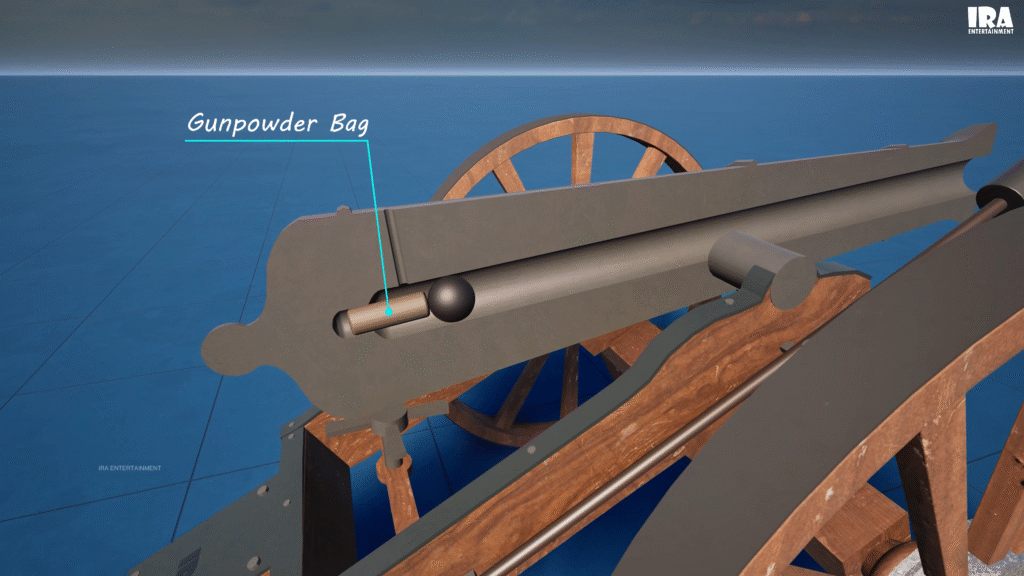
Step 4 – Load the Gunpowder
Gunpowder is packed into a powder bag and pushed into the barrel. The amount depends on:
Cannon size
Projectile weight
Desired firing range
👉 Gunpowder Quantities
Small cannons: 100g – 500g
Medium: 1kg – 3kg
Large: 5kg – 15kg

Step 5 – Load the Cannonball
After the powder, the cannonball is loaded. Some cannonballs are solid iron, while others are hollow shells filled with explosives.
👉 Cannonball Weights
Small: 0.9kg – 2.7kg
Medium: 5.4kg – 10.9kg
Large: 14.5kg – 19kg or more
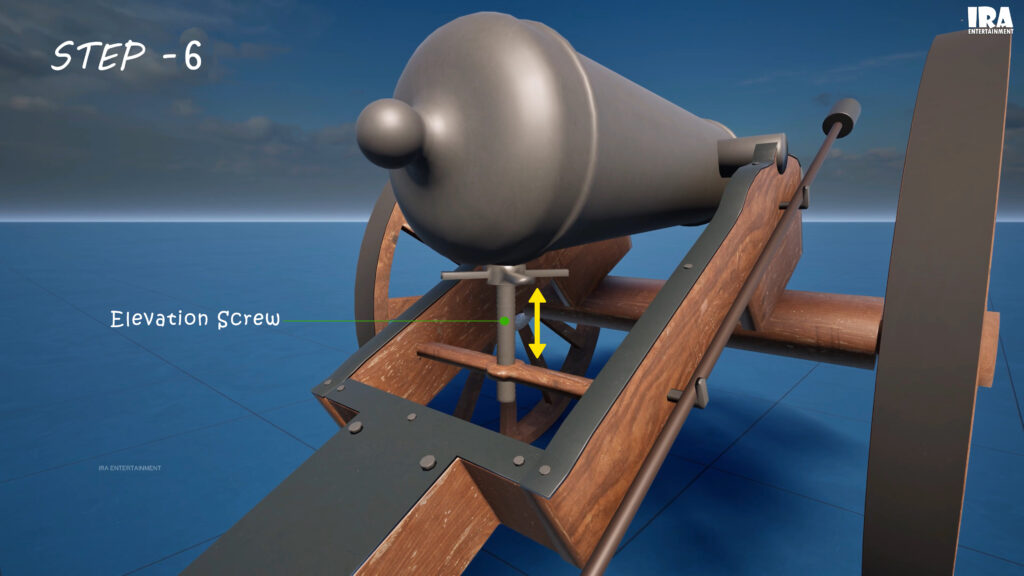
Step 6 – Set Elevation
Use the elevation screw to raise or lower the angle based on the distance.
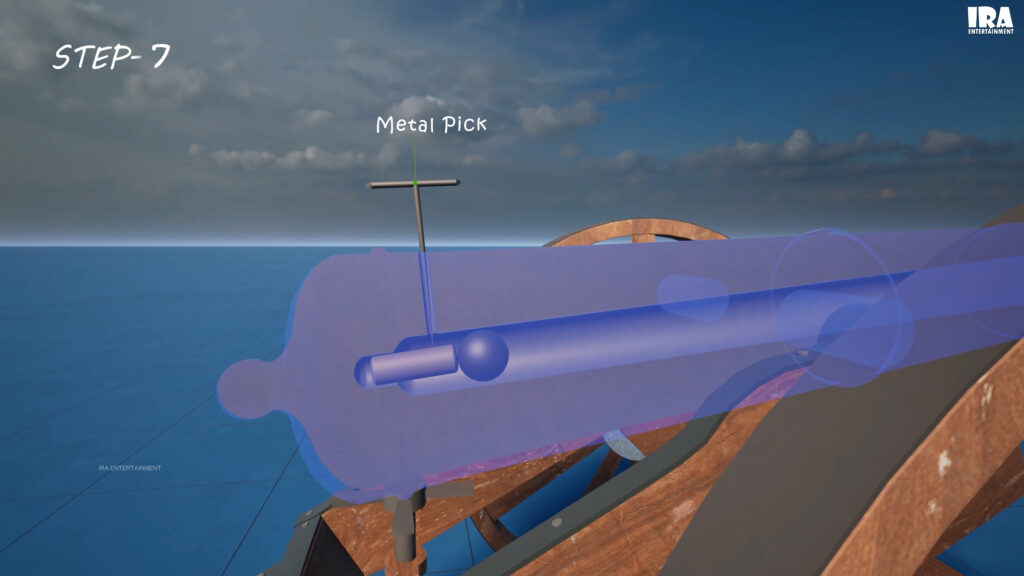
Step 7 – Ignite and Fire!
A metal pick is inserted through the vent to pierce the powder bag, creating a hole that allows the fire to ignite the charge more quickly
A fuse plug is inserted into the vent.
When struck, it creates friction and sparks, igniting the powder.

Old method of ignition
In earlier times, a heated metal rod or a burning stick was used to ignite the gunpowder manually.
BOOM! The cannonball fires out at speeds of up to 400 km/h, creating massive force and recoil.
Are Cannons Still Used Today?
Cannons have come a long way. From early fire lances to advanced artillery and missiles, the technology has evolved. Today, traditional cannons are mostly used for ceremonial purposes or displayed in museums and historic sites.
🔔 Don’t forget to subscribe!
If you love visual learning and 3D explanations, be sure to subscribe to IRA STUDIOS and IRA ENTERTAINMENT on YouTube. Also, visit our website for even more amazing visual explainer content.
Learn visually. Learn easily.
Want to learn more through visual storytelling? Check out our detailed 3D explanation blog on How a Grenade Works.